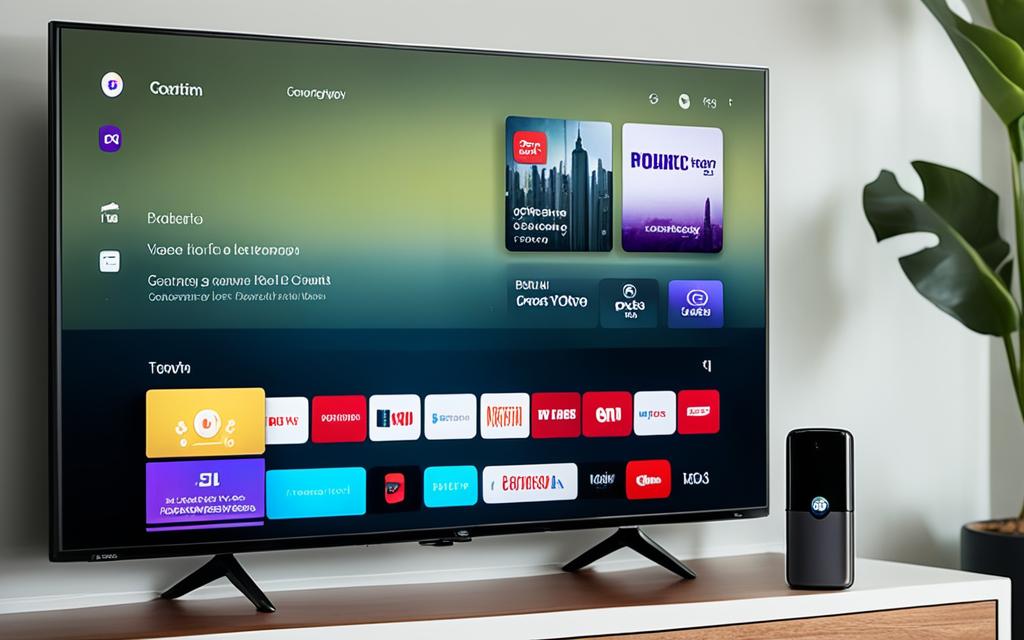How to Disable End-to-End Encryption on WhatsApp
WhatsApp is a messaging app known for its end-to-end encryption. This protects your messages and calls. Sometimes, we might want to turn off this protection. Maybe we need to check our chats on a new phone or work with some services. Legal reasons could also make us want to do this. This guide will show you how to disable end-to-end encryption on WhatsApp. It will tell you what to consider too.
In our journey with secure messaging, there are times we need to turn off WhatsApp’s end-to-end encryption. Perhaps to see our old chats on a different device, work with some services, or follow certain rules. We will guide you through stopping the encryption and the effects of this choice.
Understanding WhatsApp’s End-to-End Encryption
WhatsApp’s end-to-end encryption keeps our messages safe and private. It’s a big step in protecting our conversations. This tech makes sure only the sender and receiver can read the messages. What’s cool is even WhatsApp can’t read them.
What is End-to-End Encryption?
End-to-end encryption keeps our chats and files secret. It works by changing messages and files into a code before sending them. This code can only be opened by the person it’s meant for. So, it makes our talks completely private.
Benefits of End-to-End Encryption
WhatsApp’s end-to-end encryption offers a lot of perks. First, it boosts our privacy. It stops anyone from spying on our messages. Plus, it defends us from hackers. Even if they steal our messages, they can’t make sense of them. This keeps our secret talks safe and sound.
Reasons to Disable End-to-End Encryption on WhatsApp
The end-to-end encryption on WhatsApp is great for keeping our chats private and secure. However, there might be times when we need to turn it off.
One reason is when we get a new device. If we switch to a new phone or tablet, we might want our old chats back. Accessing encrypted chats on a new device can get tricky.
Turning off the encryption can also help when working with certain third-party services. These might be apps or services that connect with WhatsApp. By turning off encryption, it’s easier to share our chats with these services.
Legal or organization rules could also be a reason to switch off encryption. This is common for businesses in regulated sectors. They may need to show encrypted messages for checks or investigations.
Deciding to disable end-to-end encryption on WhatsApp is a big choice. It affects how secure and private our messages are. Knowing when it might be okay to do so is crucial. It allows us to decide based on what’s best for us.
how to disable end to end encryption whatsapp
If you want to turn off WhatsApp’s end-to-end encryption, there are two simple ways. Let’s look at each one:
Method 1: Choose the Option to Forget the Password
To stop encryption, select “Forget Password” in WhatsApp. You’ll need to enter your 64-bit key or make a new password. This is handy if you’ve lost your key and need to see your chats again.
Method 2: Enter the 64-bit Key or Password
The other way is to put in your 64-bit key or a new password. This is good if you remember your old encryption info. It lets you work with others or view chats without encryption.
Do these steps to turn off whatsapp encryption, disable whatsapp e2e, and remove whatsapp security as you wish. But think about the pros and cons before you do.
Disabling End-to-End Encryption on Android
Are you using an Android and want to turn off WhatsApp’s end-to-end encryption? We can help. This guide will show you how to disable the encryption backup on your device, step by step.
Step 1: Open WhatsApp and Navigate to Settings
First, launch WhatsApp on your phone. Next, click the three dots in the top-right and choose “Settings” from the menu.
Step 2: Access Chat Backup Settings
After entering Settings, scroll and click on “Chats.” This will open the Chat Settings page, where you can find Chat Backup.
Step 3: Turn Off End-to-End Encryption Backup
In Chat Backup, you can switch off end-to-end encryption. Just move the toggle to “Off”. You might need your 64-bit encryption key or have to set a new password to complete the disabling whatsapp encryption on android process.
Following these steps, you’ve turned off e2e on android whatsapp. You’ve also removed the android whatsapp encryption backup. It’s important to note that turning off end-to-end encryption lets WhatsApp and maybe other services access your chats. Think about the benefits and risks before you continue.

Disabling End-to-End Encryption on iOS
Turning off the end-to-end encryption on your WhatsApp for iPhone or iPad is much like on Android. It requires going through the app’s settings. By changing the chat backup options, you can switch off encryption and check your message history. Here’s how to disable end-to-end encryption on your iOS gadget.
Step 1: Open WhatsApp and Navigate to Settings
To begin, open WhatsApp on your iPhone or iPad. Find the Settings, often shown with a gear symbol, and give it a tap. This lets you get into the app’s setup.
Step 2: Access Chat Backup Settings
Next, find the “Chats” or “Chat Backup” section in Settings. These hold options for your chats and backups. Then, tap on “Chat Backup”.
Step 3: Turn Off End-to-End Encryption Backup
In Chat Backup, there’s an option to switch the end-to-end encryption for backups on or off. Set this to “Off” or “Disable”. You might need to type your 64-bit encryption key or make a new password to finish.
By doing these steps, you’ll disable the end-to-end encryption on your iOS tool. This lets you see your WhatsApp chats again. Plus, it could help with using services needing your encrypted data.
Considerations Before Disabling End-to-End Encryption
Before turning off end-to-end encryption on WhatsApp, it’s key to think about the possible effects. This step can greatly impact how private and secure our data is.
Privacy Implications
Disabling encryption can mean others might see our private messages. This could risk leaking sensitive details, invade our privacy, and even allow for secret surveillance. It’s important to think about these consequences of disabling whatsapp encryption.
We also must balance privacy and security concerns with removing whatsapp security. Deciding to disable the feature requires careful thought.
Data Security Risks
Turning off encryption on WhatsApp carries risks of turning off whatsapp e2e. It makes our data easier to access by hackers. And it could lead to our valuable information being exposed.
So, before we disable encryption, let’s weigh the consequences of disabling whatsapp encryption and the risks of turning off whatsapp e2e. Think about the impact on our data security and communication safety.
Resetting or Changing the Encryption Password
We all know how important it is to keep our WhatsApp chats safe. Sometimes, we might forget our encryption password or just want to make our WhatsApp even more secure.
Changing your WhatsApp encryption password is easy. First, go to the chat backup settings in the app. Click “Change Password” and enter a new one. This new password will protect all your future chat backups.
If you want to change your current password, the process is the same. Go to chat backup settings and pick “Change Password.” You’ll enter your current password and then your new one. This way, your WhatsApp backups stay safe with the new encryption key.
When you change or reset your password, you might need to prove who you are. This could be using your fingerprint, face, or just your device’s PIN. It makes sure only you can use the new encryption key.
Updating your WhatsApp security often is a smart move. It keeps your chats and media safe from prying eyes. So, changing your encryption password from time to time helps keep your conversations private.
Alternatives to Disabling End-to-End Encryption
Disabling end-to-end encryption on WhatsApp may seem needed sometimes. But, we have other options that keep our chats safe. One choice is to make sure our iCloud or Google Drive backups are encrypted. This way, we protect our messages and media on any new device.
We can also use outside tools to increase security without turning off WhatsApp’s encryption. These tools add more ways to keep our messages safe. For example, we can encrypt single messages or control when shared info disappears.
If we want to switch to a different messaging app, we could try Signal, Telegram, or Threema. These apps offer strong privacy and security like WhatsApp does. They balance ease of use with keeping data safe, meeting our personal preferences.
| Option | Description | Pros | Cons |
|---|---|---|---|
| Encrypt Cloud Backups | Encrypt iCloud or Google Drive backups to protect chat history and media | Maintains end-to-end encryption, accessible across devices | Requires additional setup and management |
| Third-Party Encryption Tools | Use third-party tools to add extra security layers to WhatsApp | Offers advanced features like message expiration, multi-device support | May require a learning curve and additional costs |
| Alternative Messaging Apps | Explore other secure messaging platforms like Signal, Telegram, or Threema | Provides a similar level of privacy and security as WhatsApp’s encryption | Requires switching to a new app and migrating chat history |
Looking into these choices lets us keep WhatsApp safe without losing its important features. We can enjoy both the convenience and the protection, knowing our chats and content are secure.
Frequently Asked Questions
Thinking about turning off the end-to-end encryption on your WhatsApp? We get it, you might have a lot of questions. We’re here to answer the important ones so you can decide well.
Q: How will disabling end-to-end encryption impact my chat history?
A: If you turn off encryption, your old chats will stay the same. But, any new messages won’t be as safe. Think hard about the pros and cons of this.
Q: Can I restore my encrypted backups if I disable the encryption?
A: Yes, you can get back encrypted backups even if the encryption is off. Just make sure you remember your encryption key or password for the restore.
Q: What are the legal or organizational implications of disabling end-to-end encryption?
A: If your job or the law requires encryption, turning it off could cause issues. Talk to your IT team or legal advisors to be sure you’re doing the right thing.
By answering these questions, we mean to help you make a smart choice. Turning off encryption is up to you and what you need. Think carefully before you decide.
Conclusion
We’ve looked into disabling end-to-end encryption on WhatsApp. We’ve seen that users need to think hard about turning it off. The summary of disabling WhatsApp encryption shows benefits like being more accessible and helping with teamwork. But, the key takeaways on removing WhatsApp e2e warn about major privacy and security risks.
The final thoughts on turning off WhatsApp security emphasize careful thought. It’s not a small decision. Users should think about what they really need and what turning off encryption means for their safety. Exploring the options and knowing how to do it will help readers pick the best path for them.
Deciding to shut off end-to-end encryption on WhatsApp is something only you can decide. It’s key to be fully aware of what it means. We suggest going over all the info in this guide, thinking about what you need, and choosing what keeps your data and privacy secure.




